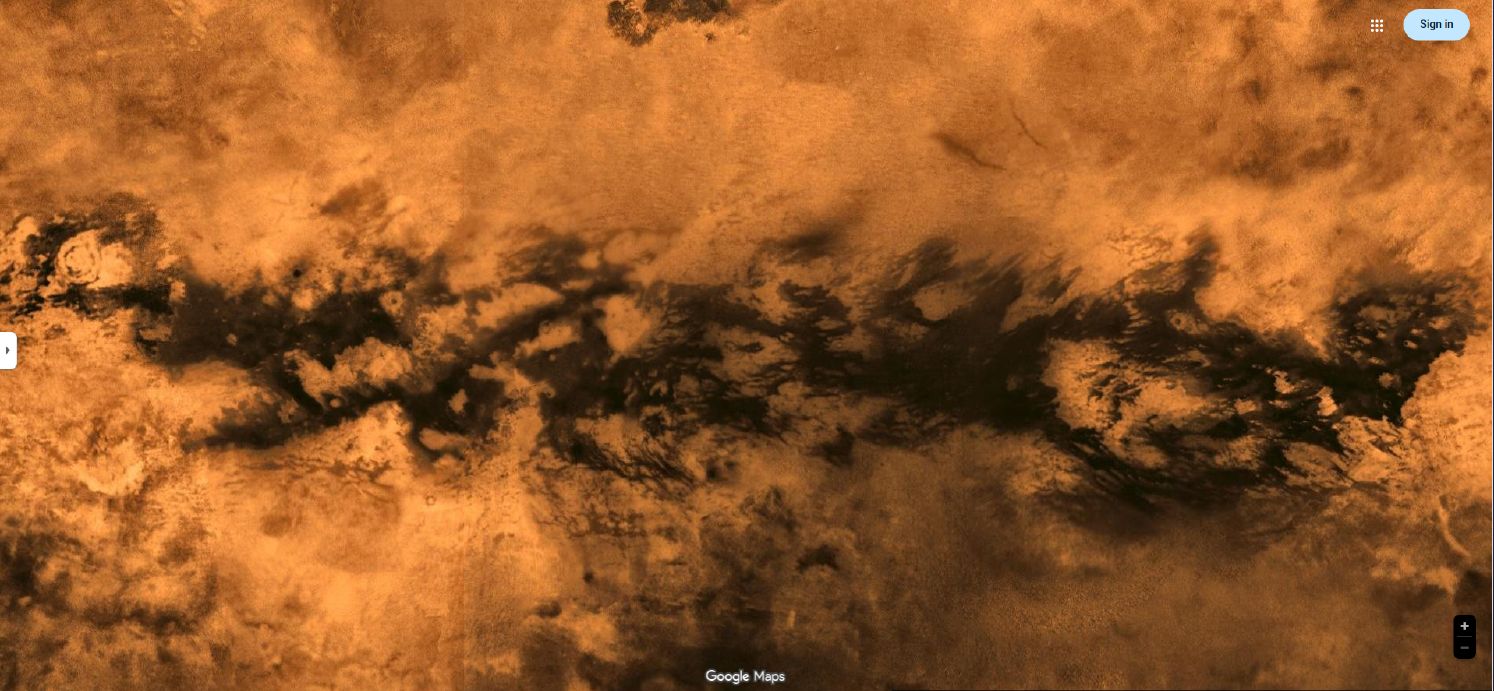
The shallow, duney, flowing seas of Titan's equator and tropics.
The drifting sediments reveal the generally stronger eastward flows.
(reduced image)
https://google.com/maps/space/titan/@7.9975347,68.0273437,14129815m/data=!3m1!1e3?entry=ttu&g_ep=EgoyMDI1MDkyOS4wIKXMDSoASAFQAw%3D%3D